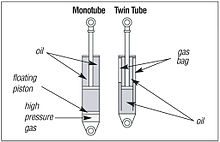Looks like
@Thorin Cain and
@demonchilde already answered most of your questions.
I would like to add the following in response to your question about the springs:
- Springs support the weight of the car and allow the wheels to move in response to the track surface. This movement allows the tires to remain in contact with the road surface rather than skipping over it.
- Softer Springs provide more grip as the wheels/tires are able to respond better to varying track surface conditions.
- Pros = more grip, better response to rough track surfaces, more stable (smoother) ride
- Cons = Less responsive to steering input, more body roll, more weight transfer, ride height must be increased
- Stiffer Springs provide a more responsive feeling car in relation to steering input.
- Pros = More responsive to steering inputs, better control of weight transfer, less body roll, ride height can be lowered
- Cons = Rougher ride. Car is more prone to "skip" over bumps making it less stable and "twitchier". Less Grip as a result
Finding the "right" settings is all about feel. You want the springs as stiff as you can make them without getting into the negative aspects of a stiff spring. Also, take the ride height into account. Remember that ride height controls the Centre of Gravity of the car. The higher the CoG is, the less stable the car will be when cornering. A ride height that is too low can result in bottoming out, which has the same effect as an overly stiff spring of making the car "skip".
Once you have found a Spring Rate that you are comfortable with, then you need to adjust the dampers to fine tune the package. In regards to the dampers, I posted a rather lengthy piece about them on page 13 of
@DolHaus 1.09 Tuning Guide thread (
here) but I have also copied and pasted the main parts below.
In GT6 the dampers and settings work as follows:
- Low number = FAST (commonly called soft)
- High numbers = SLOW (commonly called hard)
So what's the significance of the terminology? It's simple.
Dampers are NOT springs. They do not exert any force unless they are in motion and the force they do exert is resistance. Dampers are designed to control and limit the movements of the springs in order to dampen or stop vibrations. Without dampers on a car the wheel and car would continue to bounce after every bump much like the old horse drawn carriages did.
So what is a damper? A damper is simply a piston shaft inside a single or double walled cylinder filled with oil. As the piston is moved into the cylinder (compression) the oil resists the movement controlling the speed of the shaft. As the piston is pulled out of the cylinder (extension) the oil again resist the movement and controls the speed of the shaft. See the diagram below:
Note that nowhere in the diagram do we see a spring, or any other mechanism providing a lifting or extending effect. A damper connect to the cars chassis at the top and the wheel (A-Arm, or axle) at the bottom and is moved in and out by the movement of the wheel in relation to the chassis. As the wheel moves up due to a bump the damper is compressed. As the wheel is moved down by the spring the damper is extended.
By adjusting the speed of the dampers, we control how easily the piston can move through the oil. This is done by opening or closing valves within the damper that allow the oil to be "pushed" out of the way more easily, or to not be pushed as easily. For tuning purposes we need to consider the effects this has:
- Fast compression (low number) - allows damper to compress quickly, which means weight can transfer to that part of the car quickly
- Slow Compression (high number) - compression is slowed, which means weight transfer to that part of the car is slowed down
- Fast Extension (low number) - Damper is allowed to extend quickly from a compressed or neutral state allowing weight to be moved away from that part of the car quickly
- Slow Extension (high number) - Damper is prevented from extending, which means weight is held over that part of the car for a longer period
Understanding the impacts of the dampers on weight transfer is key in order to address many aspects of the tune. Weight transfer happens during braking, turning and accelerating. Controlling that weight transfer will provide you with a far better handling car.
After that, the last thing to work on is the Anti-Roll bars. These are used to control lateral (side to side) body roll only. They should be used to fine tune your cornering, whereas Springs and Dampers are used for all forms of weight transfer including Braking, Acceleration and Cornering.
I hope that helps.



